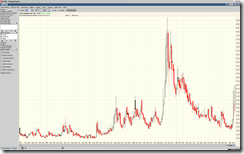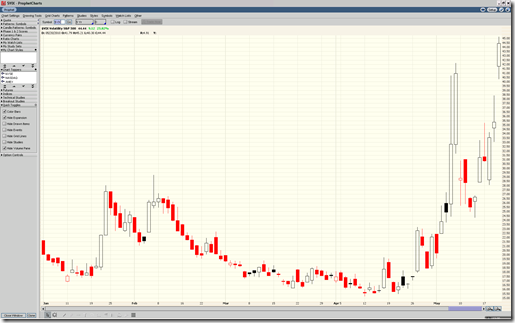Jul 11, 2010 0
Rainmakers… Part 2
In Rainmakers… Part 2, I want to go through the list and Q&A of the Rainmakers identified by DC Velocity in their article Who are this year’s Rainmakers?. The previous post in this series is here: Rainmakers… Part 1.
So let’s get started,
Judy McReynolds [Arkansas Best Corp]
Q: You have taken the reins of Arkansas Best during a very challenging time for the economy, transportation, and the LTL segment in particular. LTL faces overcapacity, soft demand, and ongoing price wars. What is your strategy for steering Arkansas Best and ABF through this?
A: Both the industry and our company have been severely impacted by the length and depth of this recession. Our most experienced officers will tell you they have never seen a business climate as challenging as this one. Fortunately, we have managed the company conservatively and that has provided us with flexibility. We have remained focused on understanding what is important to our customers and finding a way to be an essential element of their distribution networks. Those are the things that have sustained us during this challenging period and will allow us to be successful in the future.
Summary: My, how times have changed. During the period immediately before this recession/depression, trucking was booming, drivers were scarce even while oil prices were high. Now, this industry is muddling through the trough laden with overcapacity. Even if and when the broader economy recovers, trucking will continue to remain in the doldrums until the excess capacity is discarded. If as Judy mentioned, that Arkansas Best has been managed conservatively, then it should be well positioned to ride out the lean years which in my opinion could last quite a while longer than people expect and especially for the trucking industry.
Steve Mulaik [Progress Group]
Q: What one key piece of advice would you offer a supply chain manager looking to set up a logistics network in India?
A: Always have a Plan B in your pocket. Things happen fast or they never happen at all in India. The problem is you never know which until the last second. Risk management is child’s play in the United States compared to what it’s like on the [Indian] subcontinent. Make it your organization’s mission to be prepared.
Summary: Now, I’m from India and have a fair idea of the business practices in my country and it is refreshing to hear a reflection on the enormous differences in the way things are done in different countries. And I agree strongly that Risk management here is child’s play in the US compared to other parts of the world. Just last week, I was at a party hosted by my uncle who spent a great deal of time with a non-profit in Sierra Leone (in the years leading up to the coup and war i.e. 1990s). There was one memorable line that I think captures the polar opposites of how different cultures operate – “Six days for the thief man, one day for the master.” The phrase means that workers might spend six days thieving from the master while the master has only one day to discover and put an end to it – lopsided, wouldn’t you say?
What I’ve always found surprising about the global supply chain is that it works. Somehow. Some sort of a shifting but workable common ground is found upon which this global supply chain marches forward. Corporations that are engaged in this global dance have somehow managed to persevere where decades and millennia of human endeavor has sallied and failed. I think there is an important reason for this – the transnational corporation has an operational sub-culture that in all matters non-operational is dissociated from the collision of cultures that is constantly taking place. What I’m saying is that as long as it was the members of the culture that attempted to create long supply chains, it kept tailing because culture carried a currency that rarely extended far beyond the borders of that culture. The transnational corporation is one of the ways in which this former feature of human experience has been transcended. And that is a significant breakthrough.
Wesley Randall [Auburn University]
Q: What advice would you offer a young person considering a career in logistics or supply chain?
A: Work hard, learn the basics, find a mentor, be willing to take a lateral job to learn a new skill, and don’t be afraid to go international. For my family, the time spent internationally was some of the best of our lives. And care about the people around you. I recently heard an executive from The Container Store say, "Culture eats strategy for breakfast". How true that is. There is an emerging realization that attracting and keeping talent is critical to sustained competitive advantage.
Summary: “Culture eats strategy for breakfast.” That’s some major pawnage.
Rich Thompson [Jones Lang LaSalle]
Q: The conventional wisdom has been that the industrial property segment skirted much of the damage inflicted on the real estate market in the past two years. Is the other shoe about to drop, or has it already dropped?
A: In general, real estate values are down 30 percent across the board, and industrial properties have suffered as with the rest of the commercial real estate market.Over the past five quarters, the majority of U.S. industrial markets have experienced rising vacancy rates, creating the potential for landlord cash flow issues. Based on how the debt is structured on properties experiencing these problems, we expect to see more foreclosures, loan defaults and public disclosure of these problems in the industrial market in 2010 and 2011.
Summary: If you’ve been following this blog, I think you’d easily agree that I’ve been harping about the implosion and non-recovery in the housing market, broader economy etc. In fact, for the better part of the past 12 months, this has been the constant on this blog. This is simply because, this implosion is ongoing – it’s not in the public eye because negativity (even if true) has a limited shelf life while positivity does not. As Rich says, these problems in the industrial and commercial can be expected to continue in 2010 and 2011. Well, I’d expect the real estate oversupply to last longer than that until some major driver of growth appears.
One anecdotal observation that I make is that people are snapping up real estate thinking that there are good deals available. It’s true that there has been a 20-25% decrease in property values but my study of asset values post bubbles is that it has to reach the point that it is considered a dead end and I just don’t think that it has reached that point stateside. Couple that with the fact that residential real estate is still largely unaffordable evidenced by the need for loans still offered at 3.5% down (FHA) and even 5% by private lenders – this market is still on life support. Consequently, when the most important investment that middle class families makes is treading water, what are the implications for the broader economy and the supply chains at large?
Of course, the new iPhone is selling like hot cakes – so go figure?



